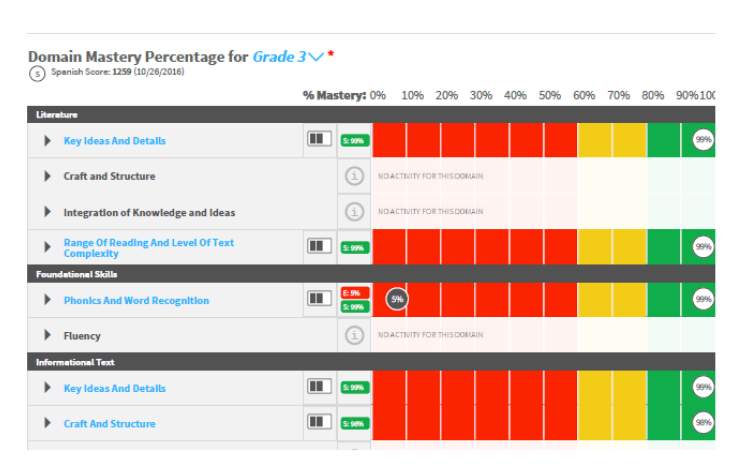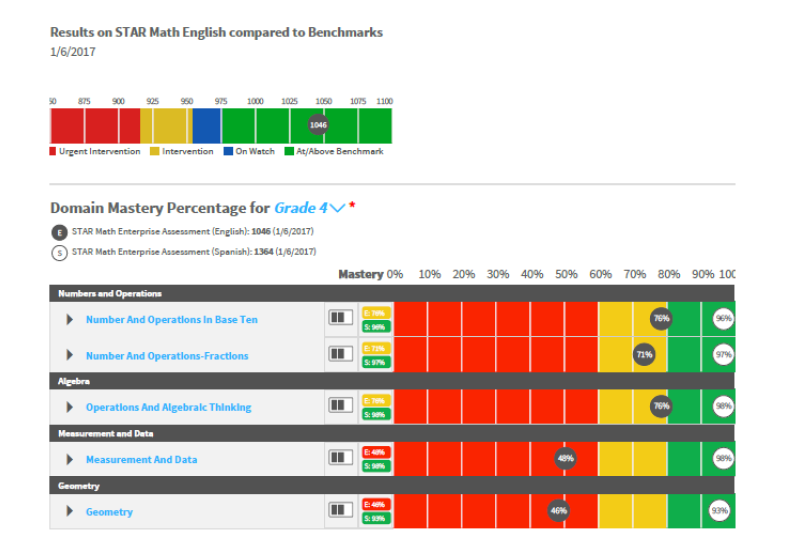March 20, 2017
No two students are alike. Every student has a different background, different interests, and different classroom needs. To nurture each student’s individual strengths, learning must be personalized for each. For example, let’s take a look at Isabel and Luis, two English language learners.
Isabel
Isabel and her family just moved to the United States from Columbia. They don’t speak any English. Isabel is eight years old and in third grade, but she often struggles to understand what her teachers are asking her to do. Isabel’s teachers are doing what they can to help, but with limited resources, they are not sure where to begin.
Luis
Then there’s Luis. Luis lives in Texas with his family. His parents were originally born in Mexico, but he was born in the United States. His parents speak Spanish at home with him and his brothers. His school has a population of 95% Hispanic students and he often hears a mix of both English and Spanish throughout the school day. Luis is fully conversational in English when talking with his friends in class or on the playground. However, his teachers are concerned because his test scores in English contradict what they see during daily interactions.
Do you know students like Isabel and Luis?
Personalized learning
Personalized learning is one of the most powerful strategies talked about in K12 education today. With advancements in technology, the ability to tailor instruction to meet the needs and interests of the individual student has become not only a possibility, but a reality. In addition, this shift in strategy brings the opportunity for students to progress and master curriculum at their own pace. According to Angela Cooper, a math teacher at Research Triangle High School in Durham, North Carolina, the purpose of personalized learning is “for students to get there on their own, using what they already have and know” (Cooper, 2017). How do you know for sure what ELL students already have and know if they are still learning English? If you do not have a starting place in what your students know, how can you move them forward?
Fortunately, Renaissance Star Assessments® are now available in English and Spanish. Let’s consider how these assessments affect the ability to personalize learning for ELL students.
A closer look at Isabel and Luis
Let’s take a closer look at Isabel. Although she speaks Spanish as a native language, she receives instruction in English only. The results of her Renaissance Star Reading® assessments, as seen in the Mastery View below, show that she has mastered grade-level language arts domains when tested in Spanish. When tested in English, however, she is limited to demonstrating minimal knowledge of phonics and word recognition—skills that fall well below her current grade. Taken together, this means that Isabel already has and knows grade-level language arts domains, but is unable to show this in English.
Isabel’s teacher, aware of the research showing the relationship between vocabulary and reading comprehension, uses this information to guide a personalized learning path for her. Because Isabel has already demonstrated competency in her grade-level domains in Spanish, her teacher decides the best way to help Isabel is to focus on English vocabulary development. She personalizes Isabel’s learning in two ways: 1.) building vocabulary using Spanish-English cognates—words Isabel is likely to already know in Spanish that will transfer to English, and 2.) including vocabulary words related to topics that increase her vocabulary across subject areas. To be sure this plan is effective, she monitors Isabel’s progress monthly with Star Reading.

Mastery View – Isabel
One year older than Isabel, Luis recently took Renaissance Star Math® assessments in English and Spanish. Like Isabel, Luis’s first language is Spanish. However, unlike Isabel, who receives instruction in English only, Luis is enrolled in a dual-language program—meaning he receives instruction in both English and Spanish. The results of his Star Math tests are shown in the Mastery View, making it easy to see side-by-side his domain performance by language. Reviewing Luis’s test results, his two teachers notice that he demonstrates mastery of five domains tested in Spanish and is coming along nicely in demonstrating some of the same skills in English. However, he appears to still struggle in measurement and data and geometry when tested in English.
Together, Luis’s teachers construct a plan. In reviewing the curriculum, the English teacher notices that the areas in which Luis struggled in English were heavily vocabulary-driven. In addition, the words that challenged Luis were not related to math operations. They were low-frequency words not often taught to second-language learners. To support Luis’s achievement in both languages, the teachers personalize his learning in both languages of instruction. First, they decide to increase the pace of the skills he already has and can demonstrate in both languages of instruction. Second, when in English, Luis previews each week’s math lesson in advance, creating a vocabulary list that helps him short-term while building vocabulary long-term. He looks each word up in the dictionary and then checks with his teacher to be sure his definition matches the use of the word in the math problem. Luis’s progress in math is monitored monthly to be sure the plan meets his needs.

Mastery View – Luis
With so many variables to consider, personalizing learning may appear overwhelming at first when talking about ELL students. With the Mastery View from Star assessments, however, identifying what students already have and know in English compared to what students already have and know in Spanish is clear. The knowledge from Star assessments changes everything for teachers.
Looking for more resources? Explore everything that Star Assessments have to offer.

